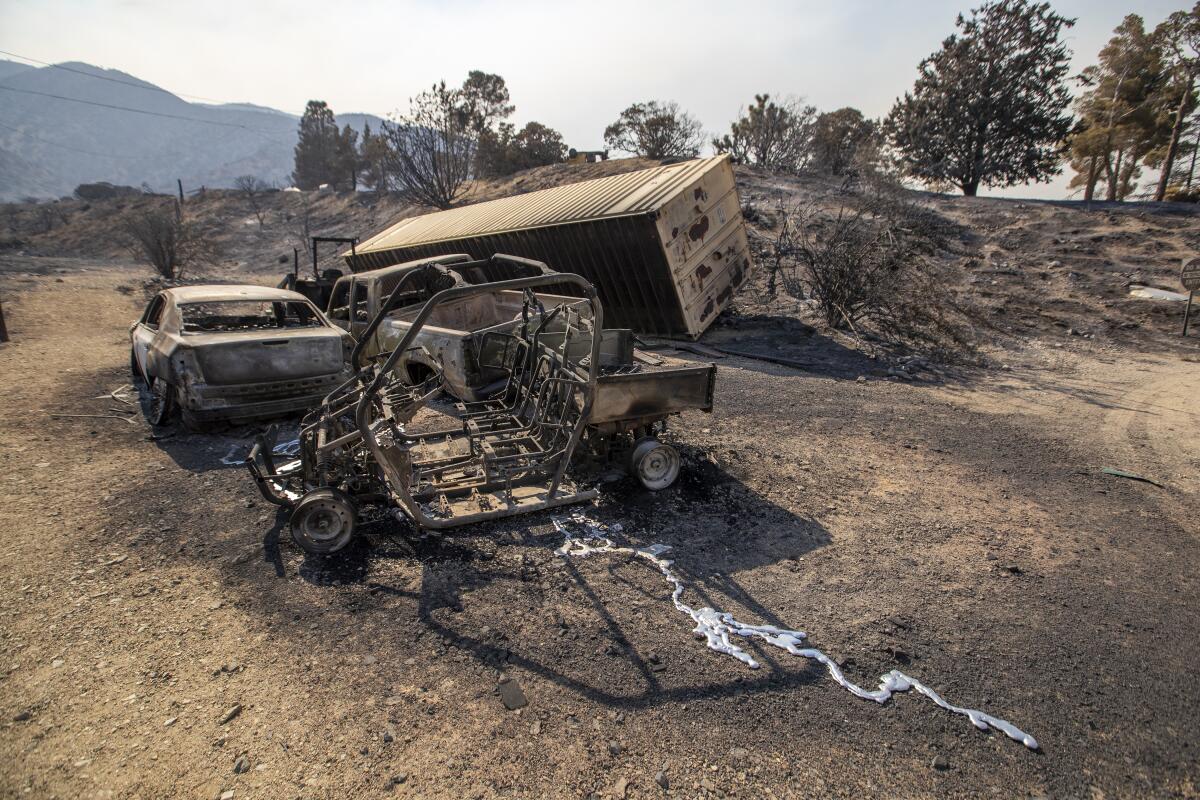State expands homeowners insurance protections to L.A. County residents around Bobcat fire

- Share via
A state-mandated moratorium banning insurers from dropping homeowners policies in fire-stricken areas has been expanded to include hundreds of thousands of residents impacted by the Bobcat fire, officials announced Thursday.
The moratorium lasts a year and begins Sept. 25, the date when the state declared the Bobcat fire an emergency. Insurers will be prohibited from canceling or refusing to renew 347,000 homeowners’ policies in specific ZIP Codes in and around Bobcat fire burn scar until Sept. 25, 2021.
“California’s devastating wildfires have affected millions of residents, and the last thing they need is to have to search for new insurance while they are still recovering,” said Insurance Commissioner Ricardo Lara. “By pushing the pause button on nonrenewals, we will give breathing room to wildfire-scarred communities and homeowners as we all adapt, take steps to mitigate risks and find further solutions to help stabilize the insurance market.”
The Bobcat fire started Sept. 6 and burned about 116,000 acres of forest between the San Gabriel and Antelope valleys and destroyed 160 homes and buildings. It was one of many wildfires that broke out in August and September — blazes that made 2020 the state’s worst fire year on record. More than 4 million acres have burned and dozens of people have been killed.
Thursday’s announcement expands on a moratorium Lara announced in November, bringing the total number of policies impacted to 2.4 million statewide. It includes the foothill communities of Azusa, Monrovia, Arcadia, La Cañada, Flintridge, Pasadena, Altadena, Glendale, Covina, Baldwin Park, Claremont, La Crescenta, Upland, Sierra Madre, Glendora, Lancaster and Palmdale.
“After such a challenging year for so many of our Los Angeles County communities, this resource is deeply needed and appreciated,” L.A. County Supervisor Kathryn Barger said.
In the last few years, repeated, destructive wind-driven fires in forest and foothill communities have bled billions of dollars of insurance provider profits, leading them to raise premiums or flee the marketplace altogether.
Lara’s order includes homeowners in the following counties: Butte, Fresno, Lake, Los Angeles, Madera, Mariposa, Mendocino, Napa, Nevada, Monterey, Plumas, San Bernardino, San Diego, San Mateo, Santa Clara, Santa Cruz, Siskiyou, Solano, Stanislaus, Yolo and Yuba.
It’s the second moratorium Lara has issued since taking office in 2019. About 36,000 Los Angeles County policyholders who were protected under that order for the Saddleridge, Hillside and Tick fires will remain protected for another year.
Beyond the moratorium, the Department of Insurance is also working with insurance providers and consumer advocates and others to find agreement on how to stabilize the state’s insurance market, which is the fourth largest in the world.
Over the last three years, a number of issues, from climate change to California’s housing costs and availability, have met head-on in the state’s wildland-urban interface where the suburbs blend into rugged mountain terrain.
Residents are seeing policy premiums jump by hundreds of percent a year while others are opting to quietly forgo coverage altogether. Still others have turned to the secondary market, which has fewer consumer protections, or to the state’s plan for high-risk policies, which is more expensive and offers less coverage.
Between 2018 and 2019, there was a 31% increase in homeowner policy nonrenewals statewide and a 61% increase in areas deemed at moderate or very high risk of fire, according to state data. The worst-hit counties watched insurers refuse to renew policies at an even greater clip while those that remained jacked up their policy premiums.
To stem the rising tide against homeowners, Lara’s office announced earlier this year that changes were coming for insurers, including a requirement that they offer an incentive for homeowners who reduce fire risks on their property and greater transparency in how insurers calculate their risks and justify their premiums.
A second hearing on the possible changes is scheduled for Dec. 10.
More to Read
Sign up for Essential California
The most important California stories and recommendations in your inbox every morning.
You may occasionally receive promotional content from the Los Angeles Times.











